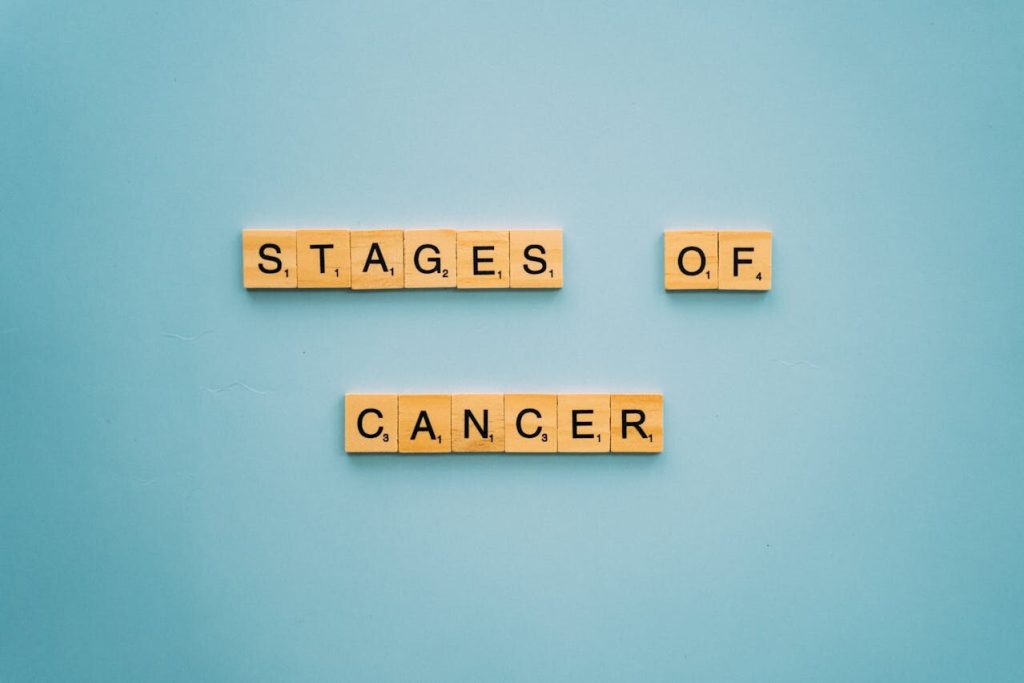Squamous cell carcinoma is a type of cancer that affects the cells lining the surface of the skin, airways, and other organs. When it occurs in the head and neck region, it can have a significant impact on a person’s quality of life and overall survival.
Understanding the survival rate of squamous cell carcinoma in the head and neck is crucial for making informed decisions about treatment and prognosis. In this article, we will explore the latest research findings related to this topic, including factors that can affect survival rates and advancements in treatment options.
Key Takeaways:
- Squamous cell carcinoma is a type of cancer that affects the cells lining the surface of the skin, airways, and other organs.
- Understanding the survival rate of squamous cell carcinoma in the head and neck is crucial for making informed decisions about treatment and prognosis.
- In this article, we will explore the latest research findings related to this topic, including factors that can affect survival rates and advancements in treatment options.
Understanding Squamous Cell Carcinoma in the Head and Neck
Located in the mucosal surfaces of the head and neck, squamous cell carcinoma is a type of cancer that commonly affects areas such as the mouth, throat, and voice box. It begins in the flat cells that make up the thin, outermost layer of the skin, known as the epidermis, or in the squamous cells that line the mucosal surfaces of the body.
The development of squamous cell carcinoma in the head and neck is often associated with risk factors such as tobacco and alcohol use, as well as exposure to the human papillomavirus (HPV) and poor oral hygiene. Symptoms of the disease may include persistent sore throat, difficulty swallowing, and changes in voice or speech. Additionally, the presence of lumps or bumps in the neck can be an indication of the disease.
Early detection and treatment are critical for improving outcomes in squamous cell carcinoma of the head and neck. Treatment may involve a combination of surgery, radiation therapy, and chemotherapy, depending on the extent and severity of the disease. Additionally, certain lifestyle modifications such as quitting tobacco and reducing alcohol consumption can help mitigate the risk of developing the disease.
Importance of Survival Rate in Squamous Cell Carcinoma
Understanding the survival rate of squamous cell carcinoma is crucial for both patients and healthcare professionals. The survival rate is a statistical measure that reflects the percentage of people who survive a certain type of cancer for a specific period of time. In the case of squamous cell carcinoma in the head and neck, the survival rate is an important prognostic factor that helps patients and healthcare providers make treatment decisions.
By understanding the survival rate of squamous cell carcinoma, patients can have a better idea of what to expect in terms of prognosis. For instance, a high survival rate indicates a higher likelihood of survival, while a low survival rate may indicate a need for more aggressive treatment options. Healthcare professionals use survival rates to help guide treatment decisions and to determine the most appropriate course of action for their patients.
Factors Affecting Survival Rate in Squamous Cell Carcinoma Head and Neck
The survival rate of squamous cell carcinoma in the head and neck can be influenced by several factors. Understanding these factors can help patients and healthcare professionals make informed decisions regarding prognosis and treatment options.
| Factor | Description |
|---|---|
| Stage of Cancer | The stage of the cancer, which reflects how far it has progressed, can have a significant impact on survival rate. According to the American Cancer Society, the five-year survival rate for localized squamous cell carcinoma of the head and neck is approximately 84%, compared to 39% for distant metastatic disease. |
| Patient Age | Age can play a role in survival rate, with younger patients generally having better outcomes. However, older patients may still benefit from treatment and should discuss their options with their healthcare team. |
| Overall Health | The overall health and fitness level of a patient can impact their ability to tolerate treatment and recover from surgery. Comorbidities, such as other medical conditions, may also affect survival rate. |
| Smoking and Alcohol Use | Smoking and alcohol use are known risk factors for squamous cell carcinoma in the head and neck. Patients who continue to smoke and drink during and after treatment may have a lower survival rate. |
Other factors that may influence survival rate include the location and size of the tumor, as well as the presence of certain genetic mutations. Patients should discuss these and other factors with their healthcare team to better understand their individual prognosis and treatment options.
Latest Research on Survival Rate in Squamous Cell Carcinoma Head and Neck
Recent studies have shed new light on the survival rate of squamous cell carcinoma in the head and neck region. One study conducted by the American Cancer Society revealed that the five-year survival rate for patients with this type of cancer is approximately 71%. However, this rate can vary depending on several factors, such as the stage of the cancer, age, and overall health condition of the patient.
Another study published in the Journal of Clinical Oncology found that early initiation of treatment is essential for improving survival outcomes in squamous cell carcinoma of the head and neck. The study indicated that patients who received treatment within 30 days of diagnosis had a significantly higher survival rate than those who waited longer for treatment.
Advancements in Treatment Options
Advancements in treatment options have also contributed to improved survival rates in squamous cell carcinoma of the head and neck. One such treatment is immunotherapy, which has been shown to be effective in certain patients with advanced-stage cancer. Immunotherapy works by boosting the body’s immune system to fight cancer cells.
Another promising treatment option is targeted therapy. This type of therapy targets specific molecules that are involved in the growth and spread of cancer cells. Targeted therapy can be effective in patients with specific genetic mutations that cause their cancer.
Impact of Research on Prognosis
The latest research on the survival rate in squamous cell carcinoma of the head and neck has significant implications for prognosis and treatment decisions. By understanding the factors that affect survival outcomes in this type of cancer, healthcare professionals can develop personalized treatment plans that optimize each patient’s chances of survival.
Additionally, the advancements in treatment options resulting from this research provide new hope for patients with squamous cell carcinoma in the head and neck region. These treatments offer potential alternatives to traditional chemotherapy and radiation therapy, which can be associated with significant side effects.
Holistic Treatment Modalities at the Cancer Center for Healing
The Cancer Center for Healing, located in Irvine, CA, offers a comprehensive approach to cancer care that includes holistic treatment modalities alongside conventional treatments. Their team of experienced healthcare professionals, led by Dr. Leigh Erin Connealy, understands the importance of addressing the physical, emotional, and spiritual well-being of patients.
At the Cancer Center for Healing, patients have access to a variety of holistic therapies that can help support their overall health and healing. These therapies include:
| Therapy | Description |
|---|---|
| Acupuncture | A Traditional Chinese Medicine technique that involves the insertion of fine needles into specific points on the body to promote healing and alleviate pain. |
| Chiropractic Care | A non-invasive therapy that improves the function of the musculoskeletal system, allowing the body to better support overall health and wellness. |
| Nutritional Counseling | A personalized approach to nutrition that helps patients optimize their diet to support their healing and alleviate symptoms related to their cancer. |
| Mind-Body Medicine | A holistic approach that addresses the interconnectedness of the mind, body, and spirit, using techniques such as meditation and yoga to promote relaxation and stress reduction. |
These therapies, when used in conjunction with conventional treatments such as chemotherapy and radiation, can help patients manage symptoms related to their cancer and improve their overall quality of life. The Cancer Center for Healing takes a patient-centric approach to care, ensuring that every patient’s unique needs and goals are taken into account when designing a comprehensive treatment plan.
Integrative Care for the Whole Person
At the Cancer Center for Healing, patients can expect to receive integrative care that addresses the whole person – mind, body, and spirit. Whether patients are seeking relief from symptoms related to their cancer treatment or are looking for ways to prevent recurrence, the team at the Cancer Center for Healing is committed to helping patients achieve their goals.
By incorporating holistic treatment modalities into their care plans, the Cancer Center for Healing is able to offer patients a more comprehensive approach to cancer care. From acupuncture to nutritional counseling, these therapies can help support the body’s natural healing processes and optimize the effectiveness of conventional treatments.
Comprehensive Cancer Care under Dr. Leigh Erin Connealy
The Cancer Center for Healing, located in Irvine, CA, offers a comprehensive approach to cancer care that integrates conventional treatments with holistic modalities. Led by renowned oncologist Dr. Leigh Erin Connealy, the center prioritizes the physical, emotional, and spiritual well-being of patients.
Dr. Connealy has over three decades of experience in treating cancer patients and takes a personalized approach to each case. She works closely with her team of healthcare professionals to develop a comprehensive treatment plan that addresses the unique needs of each patient.
The Cancer Center for Healing offers a range of holistic treatment modalities, including acupuncture, massage therapy, nutritional counseling, and mind-body therapies. These therapies are designed to support the body’s natural healing process and enhance the effectiveness of conventional treatments.
At the Cancer Center for Healing, patients receive more than just medical treatment. The center offers a warm and welcoming environment where patients can find emotional support and guidance throughout their cancer journey.
Holistic Treatment Modalities at the Cancer Center for Healing
The Cancer Center for Healing, located in Irvine, CA, offers a comprehensive approach to cancer care that includes a wide range of holistic treatment modalities. These modalities are designed to support conventional cancer treatments and improve the physical, emotional, and spiritual well-being of patients.
The center’s team of experienced practitioners offers individualized treatment plans that may include nutrition therapy, acupuncture, massage therapy, meditation, and yoga. These therapies can help reduce stress, manage treatment-related side effects, and improve overall quality of life.
| Treatment Modality | Description |
|---|---|
| Nutrition Therapy | A focus on healthy dietary choices designed to support the body’s natural healing mechanisms. |
| Acupuncture | Ancient Chinese practice of inserting thin needles into specific points of the body to reduce pain and promote healing. |
| Massage Therapy | A hands-on approach that uses pressure and movement to reduce muscle tension and promote relaxation. |
| Meditation | A practice that involves focusing the mind on a particular thought, object, or activity to reduce stress and anxiety. |
| Yoga | A physical and spiritual practice that combines movement, breathing, and meditation to promote balance and well-being. |
At the Cancer Center for Healing, patients can expect a collaborative approach to cancer care that integrates conventional treatments with complementary therapies. This approach is designed to help patients achieve optimal health outcomes and improve their overall quality of life.
For those seeking holistic cancer care, the Cancer Center for Healing offers an excellent option. Those interested in learning more about the center’s services can schedule a consultation by calling (949) 680-1880.
Skin Rash as a Symptom of Lymphoma
Lymphoma is a type of cancer that affects the lymphocytes, a type of white blood cell. While lymphoma can occur in any part of the body where lymphocytes are found, it often originates in the lymph nodes, spleen, and bone marrow. One potential symptom of lymphoma is the presence of a skin rash.
The skin rash associated with lymphoma can vary in appearance and location. It may appear as small, raised, red or purple bumps or as flat, scaly, reddish patches. The rash may be confined to one area of the body or may spread over a larger area.
It’s important to note that not all skin rashes are indicative of lymphoma, and many other conditions can cause skin rashes. However, if accompanied by other symptoms such as fatigue, unexplained weight loss, or swollen lymph nodes, a skin rash may indicate the presence of lymphoma and should be evaluated by a healthcare professional.
Managing Skin Rash in Lymphoma Patients
For lymphoma patients experiencing a skin rash, managing the condition can be an important part of their overall treatment plan. There are several strategies and treatments that can help alleviate symptoms and improve quality of life.
1. Topical treatments
Topical treatments, such as corticosteroid creams and ointments, can be effective in reducing inflammation and itching associated with skin rash. These treatments can be applied directly to the affected areas and may be used in combination with other therapies.
2. Systemic treatments
If topical treatments are not effective, systemic treatments may be necessary. These may include oral or intravenous medications, such as corticosteroids, immunosuppressants, or chemotherapy. Systemic treatments may have more significant side effects and require careful monitoring by a healthcare professional.
3. Supportive care
Supportive care measures, such as avoiding irritants and wearing loose-fitting clothing, can also help manage skin rash in lymphoma patients. Keeping the affected areas clean and moisturized can also provide relief.
4. Communication with healthcare professionals
Regular communication with healthcare professionals is essential for managing skin rash in lymphoma patients. Patients should report any changes or worsening of symptoms to their healthcare team and work together to adjust treatment plans as needed.
Diagnosis and Treatment of Lymphoma-Associated Skin Rash
Diagnosing a lymphoma-associated skin rash requires a thorough evaluation of a patient’s medical history, physical examination, and laboratory tests. A skin biopsy may also be necessary to confirm the diagnosis and determine the type of lymphoma present.
Treatment for lymphoma-associated skin rash involves addressing the underlying lymphoma as well as managing the symptoms of the rash. Treatment options may include chemotherapy, radiation therapy, targeted therapy, and immunotherapy.
| Chemotherapy | Chemotherapy involves using medication to kill cancer cells. It can be given orally, intravenously, or topically. |
|---|---|
| Radiation therapy | Radiation therapy uses high-energy x-rays to kill cancer cells. It can be used to target specific areas affected by lymphoma-associated skin rash. |
| Targeted therapy | Targeted therapy is a type of cancer treatment that uses drugs to target specific molecules or proteins on cancer cells. It can be used to treat certain types of lymphoma. |
| Immunotherapy | Immunotherapy involves using the body’s own immune system to fight cancer. It can be used to treat certain types of lymphoma and may be given in combination with other treatments. |
In addition to these treatments, supportive care measures such as using topical steroids, antihistamines, or moisturizers may be recommended to alleviate discomfort and manage the symptoms of the skin rash.
Regular communication with healthcare professionals is crucial in managing lymphoma-associated skin rash. Patients should report any changes or worsening of symptoms promptly to ensure timely adjustments to their treatment plan.
The Connection Between Skin Rash and Lymphoma
While skin rash is a common symptom experienced by many individuals, it can also be a warning sign of lymphoma. The connection between skin rash and lymphoma is complex and requires a thorough understanding of the disease and its symptoms.
There are various types of skin rash associated with lymphoma, including erythroderma, pruritus, and purpura. Erythroderma is a widespread redness of the skin, while pruritus is severe itching that can cause intense discomfort. Purpura, on the other hand, presents as purple spots or patches on the skin and can be an indication of bleeding under the skin.
The exact mechanism behind the relationship between lymphoma and skin rash is not fully understood. However, it is believed that the rash may be caused by an immune response to the cancer cells or the release of certain chemicals by the cancer cells themselves.
It is important to note that not all individuals with lymphoma will experience a skin rash, and not all individuals with a skin rash have lymphoma. However, if an individual experiences a persistent or unexplained skin rash, it is important to seek medical attention and undergo appropriate testing to determine the underlying cause.
The link between skin rash and lymphoma underscores the importance of regular check-ups with healthcare professionals and prompt reporting of any concerning symptoms. With early detection and appropriate treatment, the prognosis for individuals with lymphoma-associated skin rash can be improved.
Conclusion
Understanding the survival rate in squamous cell carcinoma of the head and neck is crucial for prognosis and treatment decisions. Factors such as the cancer stage, patient age, and overall health condition can significantly impact the survival rate. However, the latest research offers hope for improved outcomes, with advancements in treatment options and a holistic approach to cancer care.
The Cancer Center for Healing, under the guidance of Dr. Leigh Erin Connealy, offers comprehensive cancer care that integrates conventional and holistic therapies to address the physical, emotional, and spiritual well-being of patients. Patients experiencing skin rash as a symptom of lymphoma can benefit from prompt diagnosis, regular communication with healthcare professionals, and appropriate treatment and supportive care measures.
To explore your options for holistic cancer care or seek medical attention for symptoms of lymphoma or squamous cell carcinoma, schedule a consultation at the Cancer Center for Healing by calling (949) 680-1880 today.
FAQ
Q: What is the survival rate of squamous cell carcinoma in the head and neck?
A: The survival rate of squamous cell carcinoma in the head and neck varies depending on various factors such as the stage of the cancer, age of the patient, and overall health condition.
Q: What are the causes, symptoms, and prevalence of squamous cell carcinoma in the head and neck?
A: Squamous cell carcinoma in the head and neck can be caused by factors such as tobacco and alcohol use, exposure to certain viruses, and genetic predisposition. Common symptoms include throat pain, difficulty swallowing, and neck lumps. It is a prevalent form of cancer worldwide.
Q: Why is the survival rate important in squamous cell carcinoma?
A: The survival rate is crucial in squamous cell carcinoma as it provides valuable information about prognosis and helps guide treatment decisions. Understanding the survival rate can assist in determining the most appropriate course of action for the patient.
Q: What factors can affect the survival rate of squamous cell carcinoma in the head and neck?
A: The survival rate of squamous cell carcinoma in the head and neck can be influenced by various factors, including the stage of the cancer, age of the patient, overall health condition, and response to treatment.
Q: What are the latest research findings on the survival rate of squamous cell carcinoma in the head and neck?
A: Ongoing research in the field of squamous cell carcinoma in the head and neck is focused on advancing treatment options and improving survival outcomes. These findings may include new therapies, innovative clinical trials, and advancements in personalized medicine.
Q: What holistic treatment modalities are offered at the Cancer Center for Healing?
A: The Cancer Center for Healing in Irvine, CA, offers a comprehensive range of holistic treatment modalities alongside conventional treatments. These may include nutritional therapies, mind-body techniques, acupuncture, and other supportive holistic approaches.
Q: What is the approach of Dr. Leigh Erin Connealy at the Cancer Center for Healing?
A: Dr. Leigh Erin Connealy, a renowned expert in comprehensive cancer care, emphasizes an integrative approach that addresses the physical, emotional, and spiritual well-being of patients. Her holistic approach aims to provide a comprehensive and personalized treatment plan.
Q: How can I schedule a consultation at the Cancer Center for Healing?
A: To schedule a consultation at the Cancer Center for Healing, you can call (949) 680-1880. Our dedicated staff will assist you in setting up an appointment and provide further information about our holistic cancer care options.
Q: Can a skin rash be a symptom of lymphoma?
A: Yes, a skin rash can be a symptom of lymphoma. It is important to note that not all skin rashes indicate lymphoma, but some types of lymphoma can present with specific rashes. If you notice any persistent or concerning skin rash, it is advisable to consult with a healthcare professional for proper evaluation.
Q: How can skin rash in lymphoma patients be managed?
A: The management of skin rash in lymphoma patients may involve various approaches, including topical treatments, oral medications, and supportive care measures to alleviate symptoms and promote skin healing. It is important to work closely with healthcare professionals to determine the most suitable management plan.
Q: How is lymphoma-associated skin rash diagnosed and treated?
A: The diagnosis of lymphoma-associated skin rash typically involves a combination of physical examination, medical history review, and possibly further diagnostic tests such as biopsies. Treatment options will depend on the specific type and stage of lymphoma, and may include chemotherapy, targeted therapy, or other interventions as recommended by the healthcare team.
Q: What is the connection between skin rash and lymphoma?
A: The connection between skin rash and lymphoma lies in the underlying mechanisms of the disease. In some cases, the presence of lymphoma cells in the skin can lead to the development of a rash. The appearance of a skin rash can serve as an indicator of disease progression and may require further evaluation and treatment.






